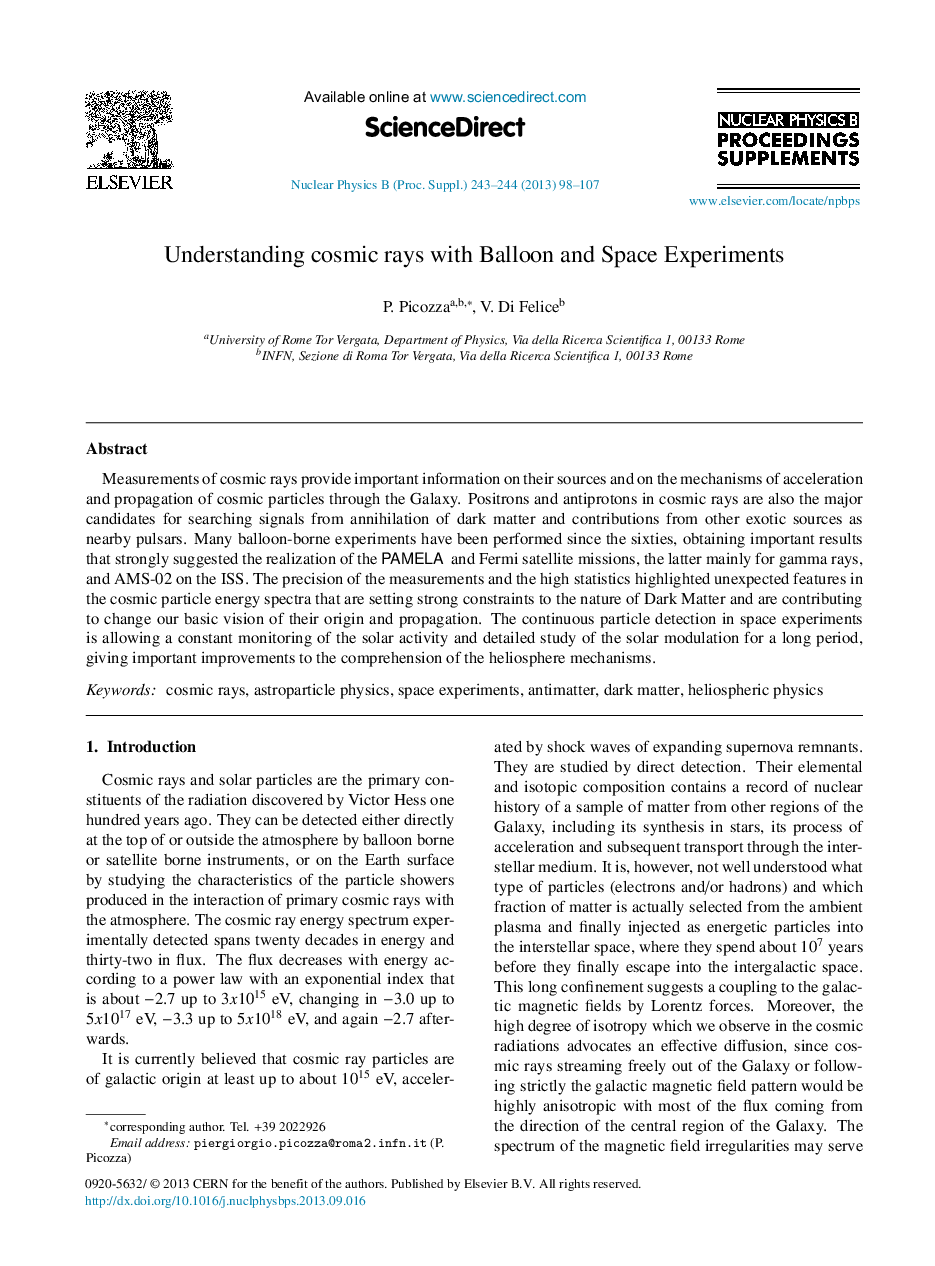| Article ID | Journal | Published Year | Pages | File Type |
|---|---|---|---|---|
| 1847308 | Nuclear Physics B - Proceedings Supplements | 2013 | 10 Pages |
Measurements of cosmic rays provide important information on their sources and on the mechanisms of acceleration and propagation of cosmic particles through the Galaxy. Positrons and antiprotons in cosmic rays are also the major candidates for searching signals from annihilation of dark matter and contributions from other exotic sources as nearby pulsars. Many balloon-borne experiments have been performed since the sixties, obtaining important results that strongly suggested the realization of the PAMELA and Fermi satellite missions, the latter mainly for gamma rays, and AMS-02 on the ISS. The precision of the measurements and the high statistics highlighted unexpected features in the cosmic particle energy spectra that are setting strong constraints to the nature of Dark Matter and are contributing to change our basic vision of their origin and propagation. The continuous particle detection in space experiments is allowing a constant monitoring of the solar activity and detailed study of the solar modulation for a long period, giving important improvements to the comprehension of the heliosphere mechanisms.
